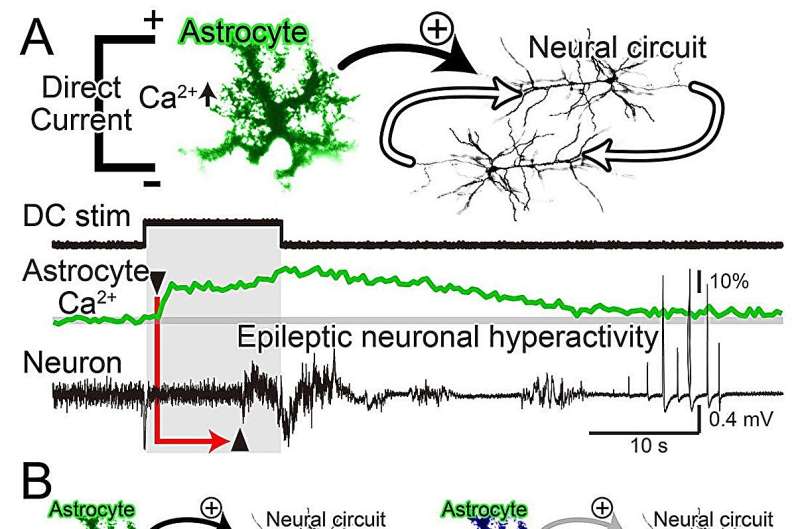This article has been reviewed according to Science X's editorial process and policies. Editors have highlighted the following attributes while ensuring the content's credibility:
fact-checked
trusted source
proofread
Researchers discover glial hyper-drive for triggering epileptic seizures

Epilepsy, where patients suffer from unexpected seizures, affects roughly 1% of the population. These seizures often involve repetitive and excessive neuronal firing, and the trigger behind this still poorly understood.
Now, researchers at Tohoku University have monitored astrocyte activity using fluorescence calcium sensors, discovering that astrocyte activity starts approximately 20 seconds before the onset of epileptic neuronal hyperactivity. This suggests that astrocytes play a significant part in triggering epileptic seizures, facilitating the hyper-drive of the neural circuit.
These findings were detailed in the journal Glia on April 9, 2024.
Astrocytes are non-neuronal glial cells that occupy almost half of the brain. They have been shown to control the local ionic and metabotropic environment. Yet, since they do not exhibit electrical activity that can be easily monitored, their role in brain function has largely been neglected. Fluorescence sensor proteins are changing this, revealing more about the mesmerizing activity of astrocytes.
"Astrocytes appear to have a determinant role in controlling the state of neuronal activity and synaptic plasticity both in physiological and pathophysiological situations," says Professor Ko Matsui of the Super-network Brain Physiology lab at Tohoku University, who led the research. "Therefore, astrocytes could be considered as a new therapeutic target for epilepsy treatment."
When brain tissue makes contact with metals such as copper, it is known to induce inflammation that leads to acute symptomatic seizures, which occurs a few times per day in mice. Matsui and his team observed these events, where they discovered that astrocyte activity may be the trigger for neuronal hyperactivity. Astrocytes can also be activated by low-amplitude direct current stimulation.
The researchers noticed that such a stimulation induced a robust increase in the astrocyte calcium, which was followed by an epileptic neuronal hyperactivity episode. When the metabolic activity of the astrocytes was blocked by applying fluorocitrate, the magnitude of the epileptic neuronal hyperactivity was significantly reduced. These all point to the fact that astrocytes have the potential to control neuronal activity.
Lead study investigator Shun Araki emphasizes that with appropriate guidance, astrocytes' functions could be harnessed to address a range of neurological conditions. This includes not only epilepsy but also potentially enhancing cognitive abilities beyond natural limitations.
More information: Shun Araki et al, Astrocyte switch to the hyperactive mode, Glia (2024). DOI: 10.1002/glia.24537



















